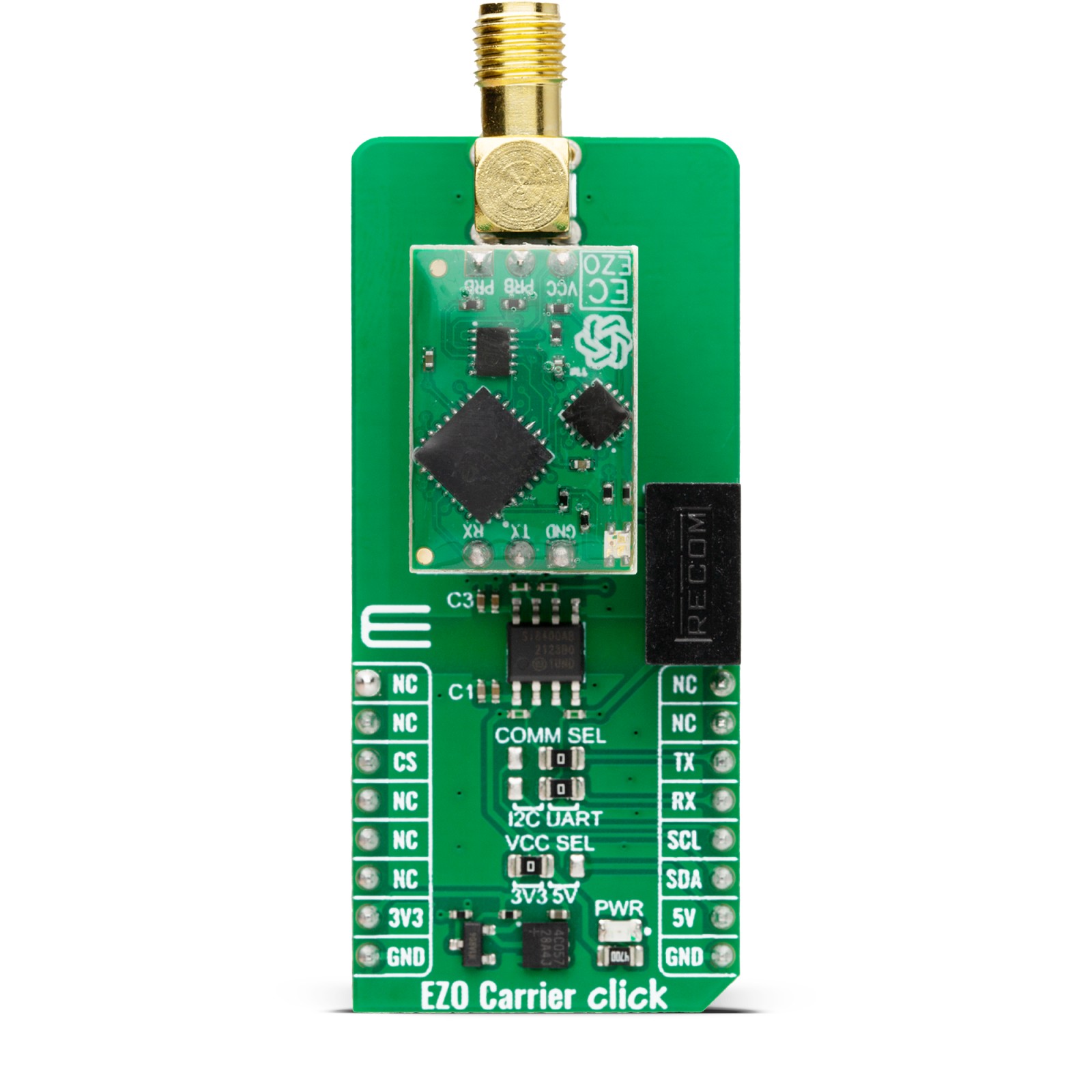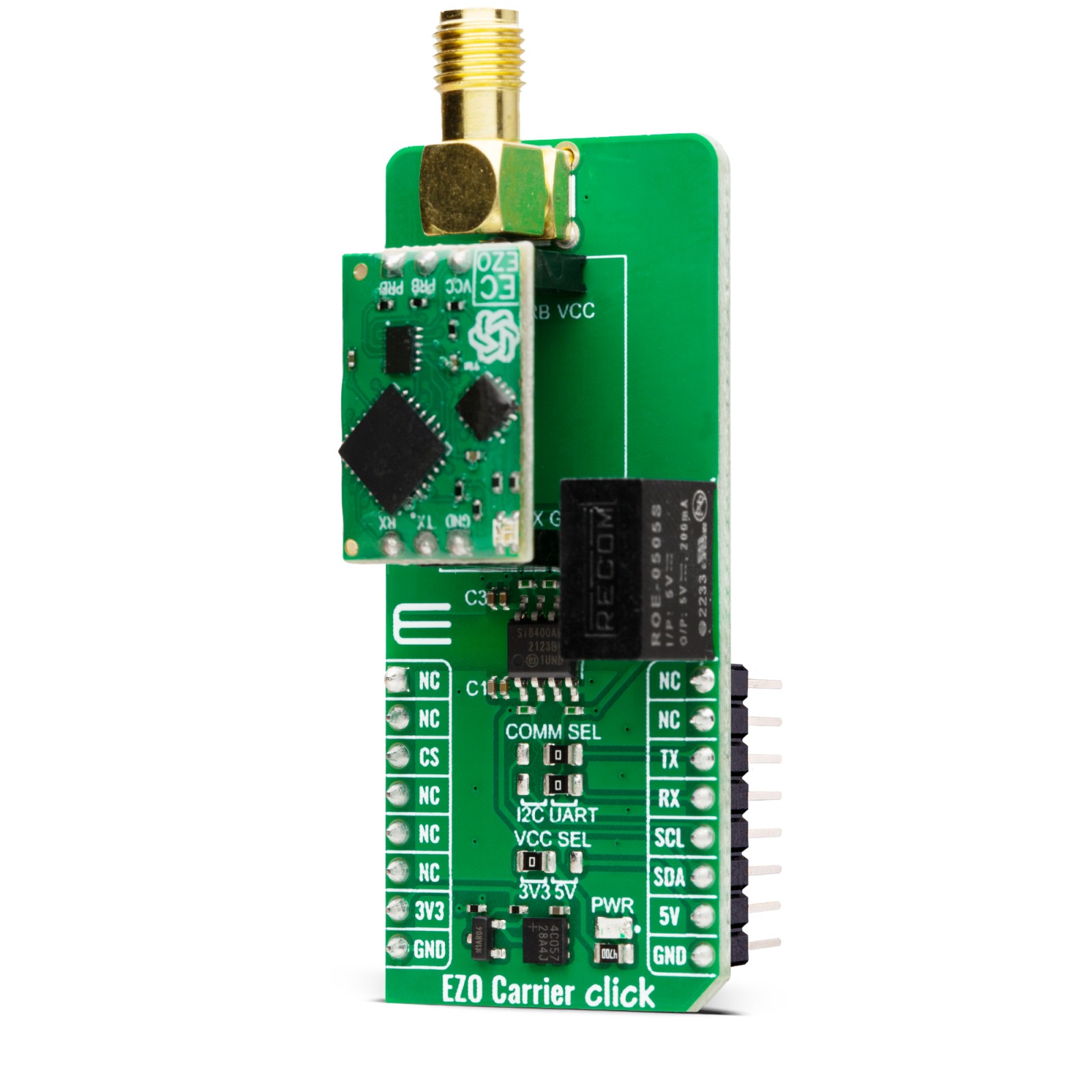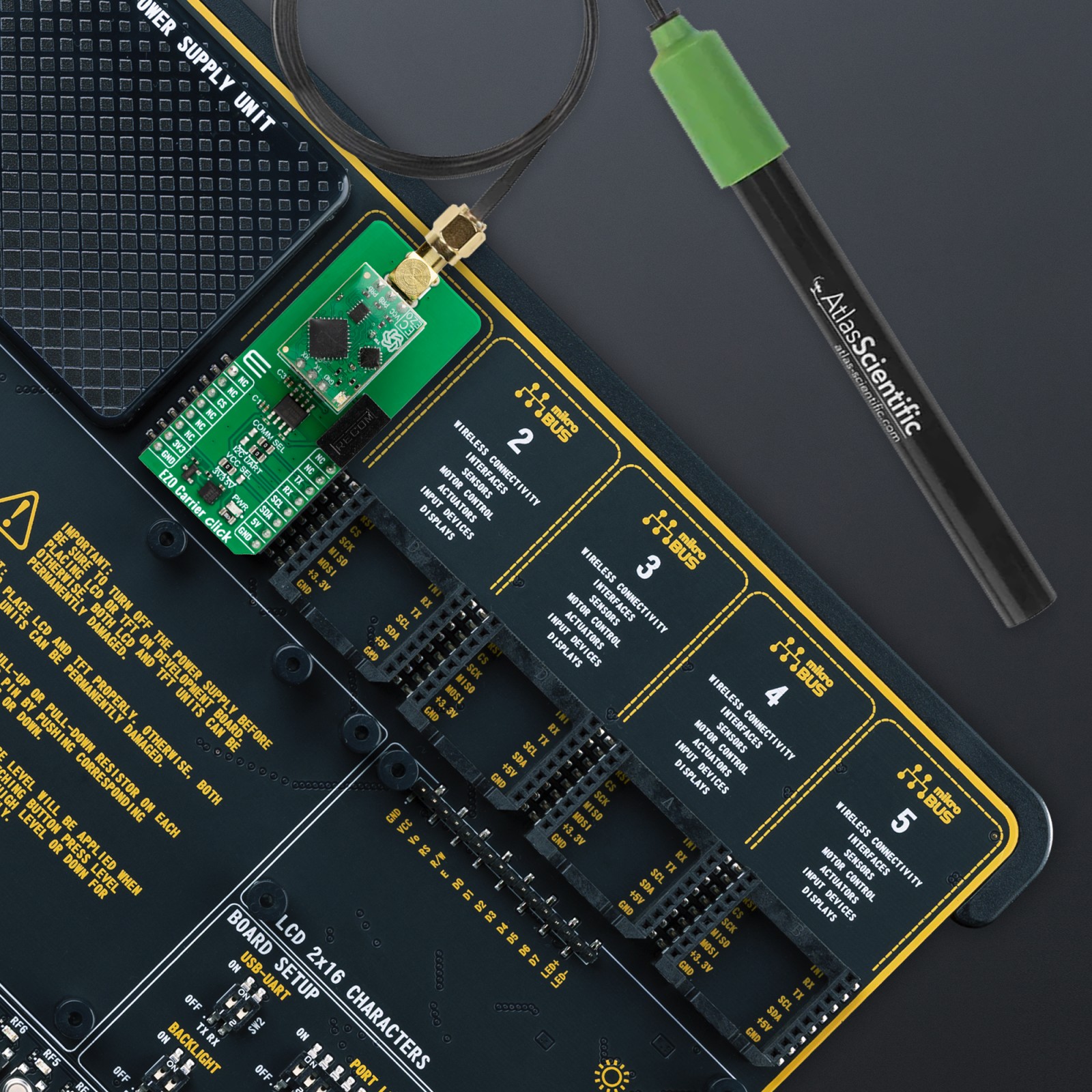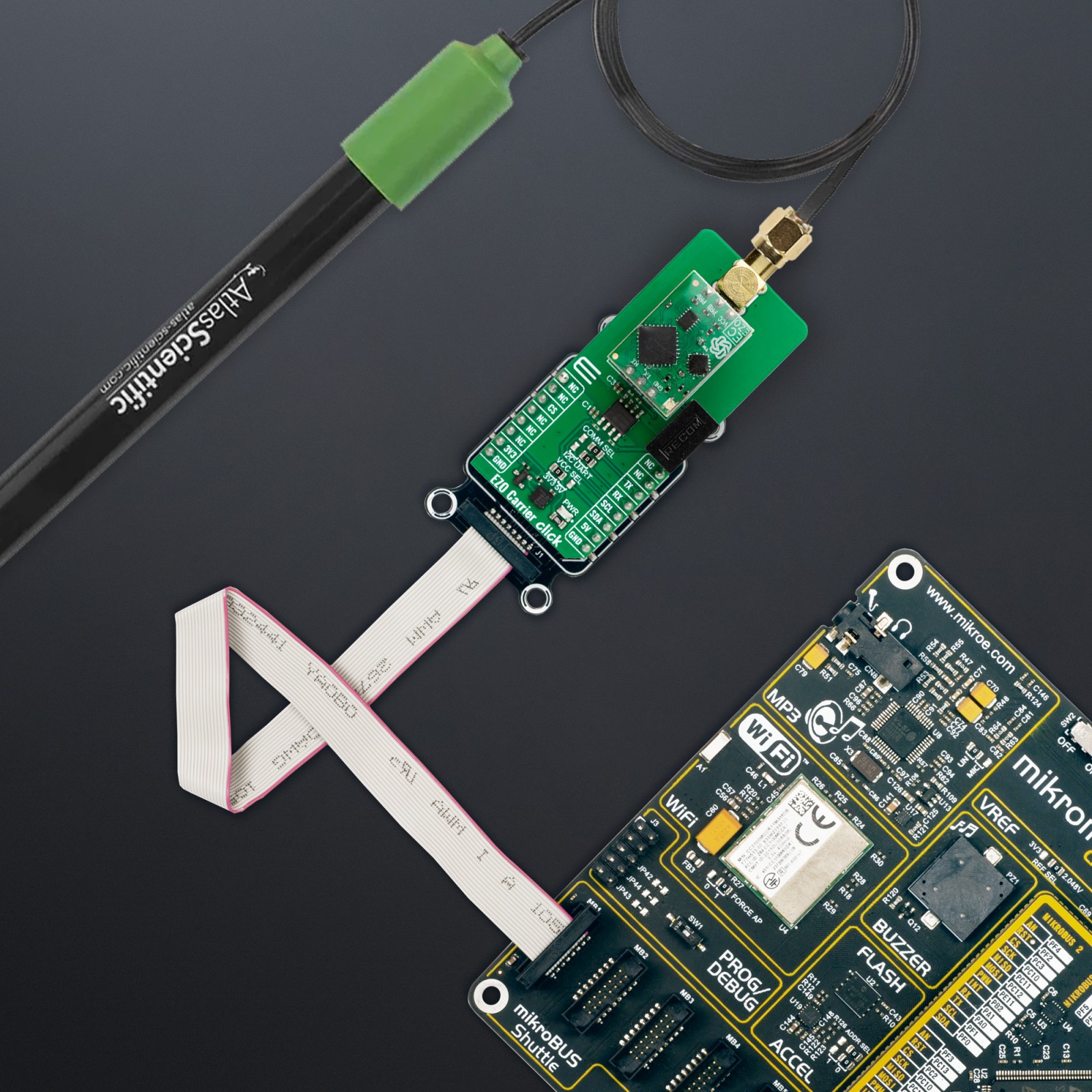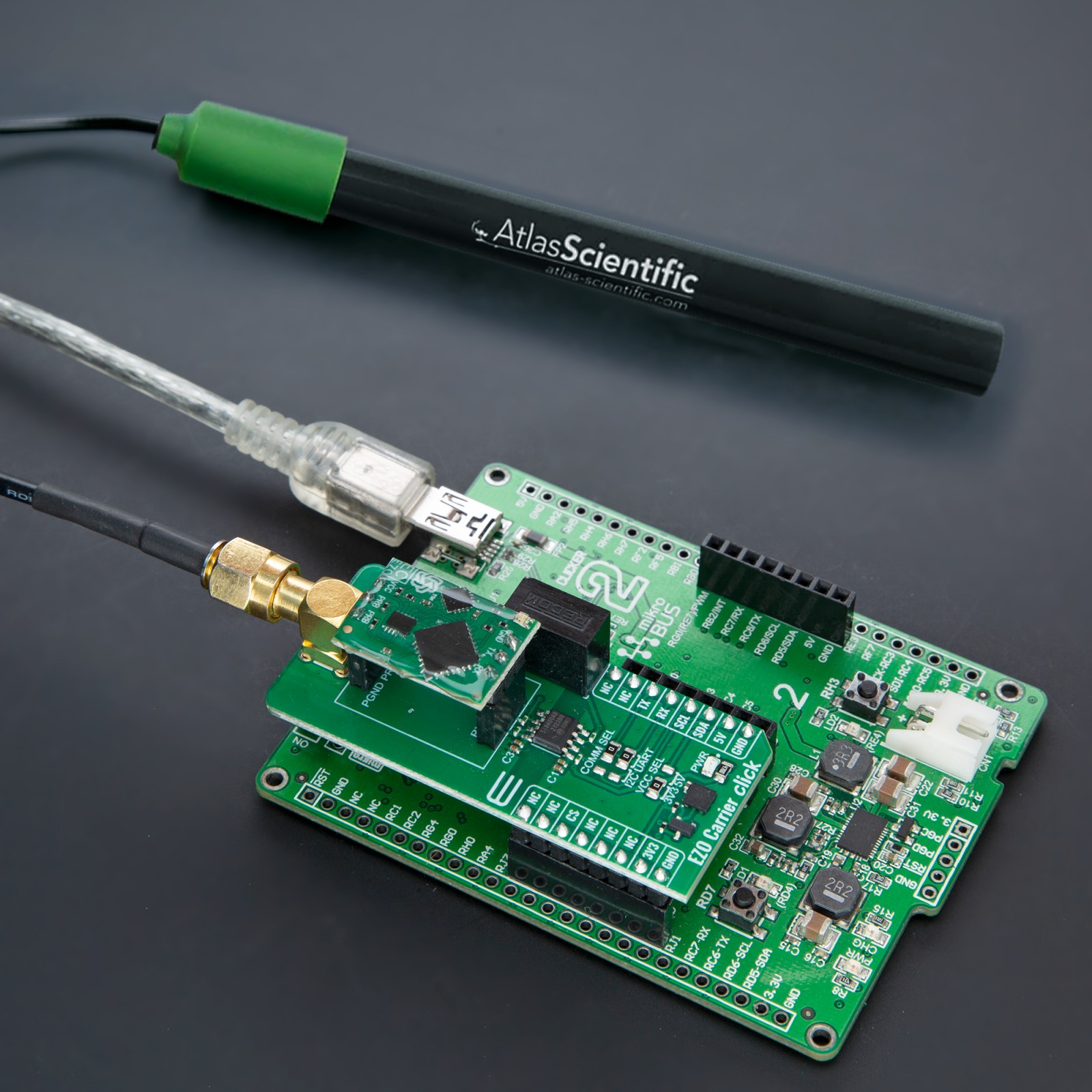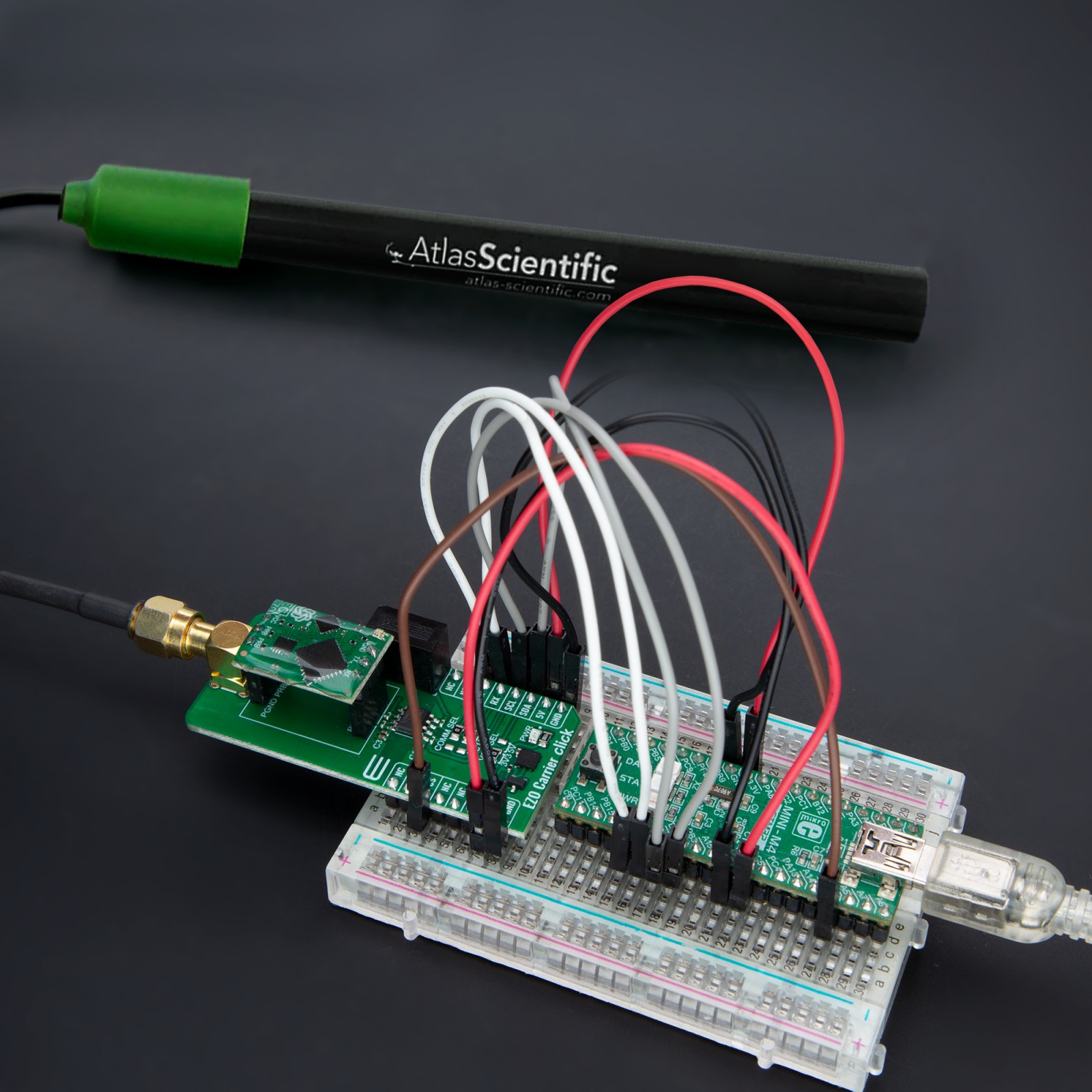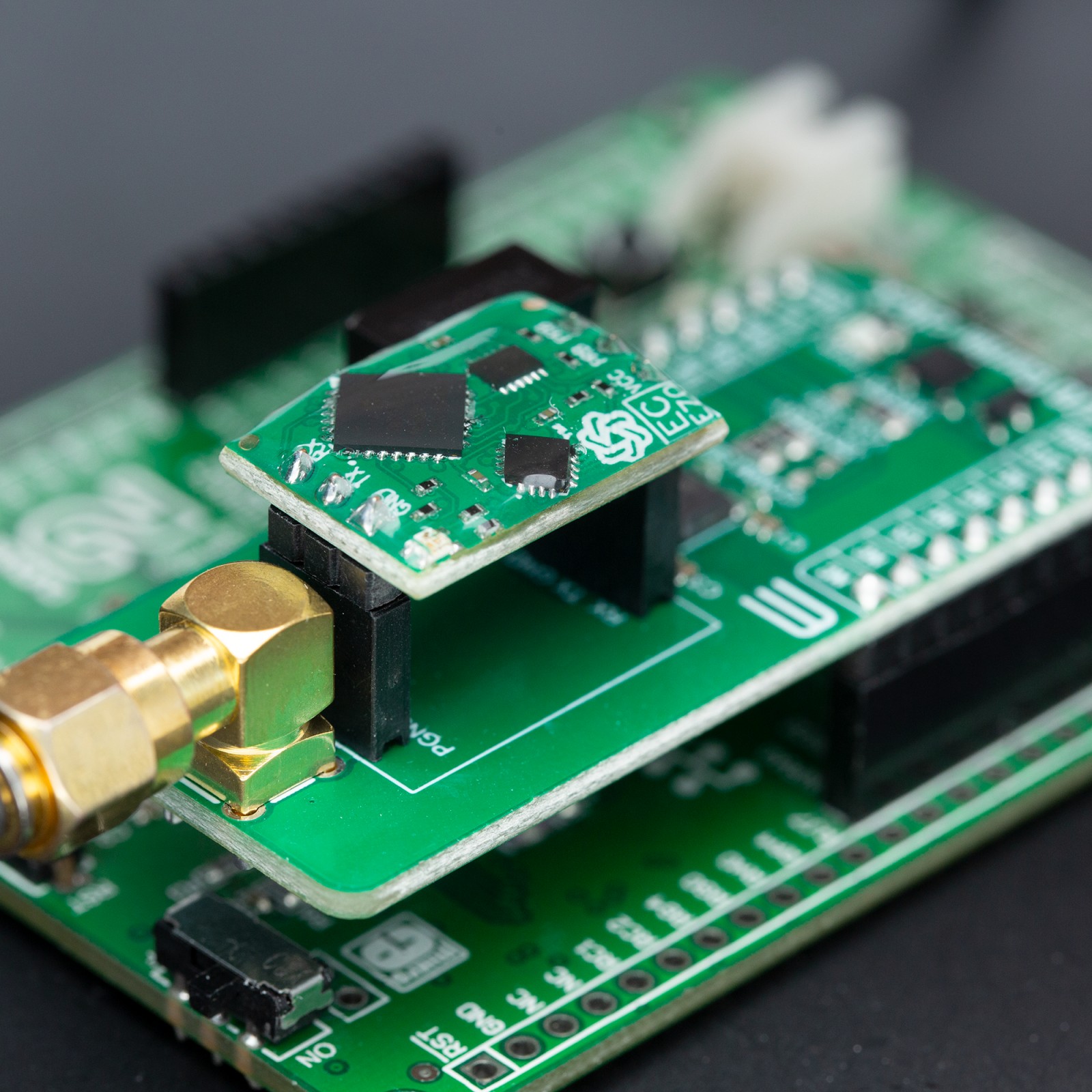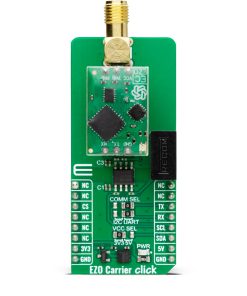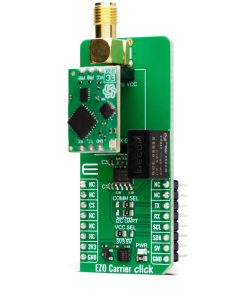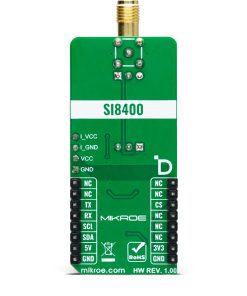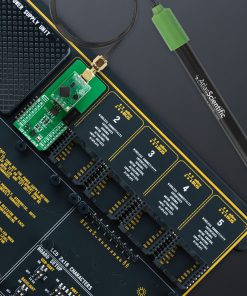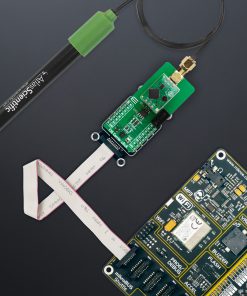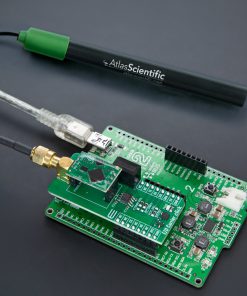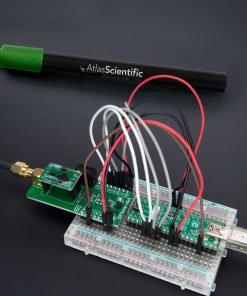Subtotal: R790.00
EZO Carrier Click – Conductivity
R2,850.00 ex. VAT
EZO Carrier Click – Conductivity is a compact add-on board for measuring conductivity, salinity, and Total Dissolved Solids (TDS) in various applications from chemical production to hydroponics. This board features the EZO-EC™, an ISO 7888 compliant embedded conductivity circuit board from Atlas Scientific. The EZO-EC™ is a small green additional board that comes together with the carrier board and allows you to read a conductivity in a range of 0.07 to over 500,000μS/cm. Still, it can also accurately measure salinity up to 42 PSU (ppt), TDS as ppm, and the specific gravity of seawater between 1.00 and 1.300. This Click board™ is ideal for reliable water chemistry measurements, supporting probes ranging from K 0.01 to K 10.2 of any brand, such as the Conductivity Probe K 1.0 from Atlas Scientific.
EZO Carrier Click is fully compatible with the mikroBUS™ socket and can be used on any host system supporting the mikroBUS™ standard. It comes with the mikroSDK open-source libraries, offering unparalleled flexibility for evaluation and customization. What sets this Click board™ apart is the groundbreaking ClickID feature, enabling your host system to seamlessly and automatically detect and identify this add-on board.
Stock: Lead-time applicable.
| 5+ | R2,707.50 |
| 10+ | R2,636.25 |
| 15+ | R2,565.00 |
| 20+ | R2,493.75 |

 BEE Click
BEE Click 